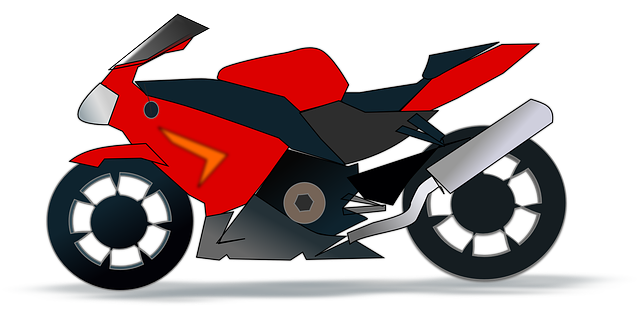To ensure your motorcycle battery performs optimally and endures its intended lifespan, regular maintenance is non-negotiable. A battery that struggles to hold a charge or start the engine may be due to age, loose connections, corrosion on terminals, self-discharge, cold weather effects, or issues with the charging system. Assess the battery's health and physical integrity first; typical motorcycle batteries have a service life of 3 to 5 years, with performance diminishing over time. Regular use or charging can prevent self-discharge, while cold weather can impact lead-acid batteries. Monitor voltage changes during engine operation and idling to diagnose potential problems. Clean battery terminals to remove corrosion, check fluid levels for electrolyte batteries, and maintain secure, corrosion-free connections to preempt common issues. For storage, use a battery tender or maintainer to keep the battery charged without overcharging. A robust maintenance regimen includes using an automatic charger for routine upkeep, inspecting the battery monthly, and employing a battery tender during extended periods of inactivity. This approach will help prevent sulfation, overcharging, and extend the battery's life. When issues arise, a battery tester is useful for gauging charge levels, with replacement being the only solution when the battery consistently fails to retain power or shows signs of damage or wear. Always choose a battery compatible with your motorcycle's make and model to ensure peak performance and prioritize safety during installation. By adhering to these practices, you can maintain your motorcycle battery's health and reliability for consistent operation throughout its lifespan.
When the ride stops, it’s often the motorcycle battery at fault. This article navigates through the frequent performance issues that can stall your journey. From identifying root causes to maintaining optimal charge levels, we explore practical solutions to common battery malfunctions. Learn to recognize symptoms of a failing battery, and follow our troubleshooting steps for efficient replacement. With our top maintenance tips, you’ll keep your motorcycle battery in peak condition, ensuring your adventures continue without interruption. Dive into the essentials of maintaining your motorcycle battery performance with this comprehensive guide.
- Identifying the Root Cause of Your Motorcycle Battery's Poor Performance
- How to Properly Charge and Maintain Your Motorcycle Battery for Optimal Performance
- Common Symptoms of a Faulty Motorcycle Battery and Simple Solutions
- Step-by-Step Guide to Troubleshooting and Replacing a Motorcycle Battery
- Top Maintenance Tips to Prevent Future Motorcycle Battery Issues
Identifying the Root Cause of Your Motorcycle Battery's Poor Performance

When your motorcycle battery is underperforming, pinpointing the exact cause is crucial for effective troubleshooting. A battery that fails to hold a charge or struggles to start the engine can be a result of several factors. Firstly, examine the battery’s age and condition; batteries typically have a lifespan of three to five years, and their performance degrades over time. Ensure the battery is securely mounted, as vibrations can loosen connections and lead to a poor charge. Check the battery terminals for corrosion, as this can hinder conductivity and prevent the battery from receiving or storing energy efficiently.
Another common issue is the state of charge; if the battery has not been used for an extended period, it may have self-discharged. Regular charging or keeping the motorcycle in use can mitigate this. Additionally, cold temperatures can affect a lead-acid battery’s ability to hold a charge, so consider this during colder months. To further diagnose the problem, monitor the battery’s voltage while the engine is running and when it’s not; significant drops could indicate a faulty charging system or an internal battery issue. Regular maintenance, including cleaning terminals, checking fluid levels (for liquid electrolyte batteries), and ensuring connections are tight and free from corrosion, can prevent many performance problems associated with motorcycle batteries.
How to Properly Charge and Maintain Your Motorcycle Battery for Optimal Performance

To ensure your motorcycle battery delivers consistent performance, proper charging and maintenance are paramount. Begin by selecting a suitable charger; an automatic battery charger is ideal as it can maintain the correct charge level without constant monitoring. Connect the charger to the battery according to the manufacturer’s instructions, ensuring the terminals are clean and free of corrosion to prevent any interference with the charging process. After each ride, check the battery’s charge level, and if necessary, recharge it using the automatic charger. Regularly inspect the battery case and terminals for signs of corrosion or swelling, as these can indicate problems such as overcharging or a weak cell.
Maintenance also involves keeping the battery fully charged. Stored energy in lead-acid batteries, commonly used in motorcycles, can evaporate over time if not used, leading to a loss of charge known as “sulfation.” To prevent this, run your motorcycle regularly, or if it’s in storage, partially recharge the battery every month. Additionally, keep the battery terminals tight and clean, as poor connections can lead to insufficient charging. Use a battery tender or maintainer during off-season months to keep the battery at full charge without overcharging. By adhering to these practices, you can extend the lifespan of your motorcycle battery and maintain its optimal performance, ensuring reliable starts and uninterrupted rides.
Common Symptoms of a Faulty Motorcycle Battery and Simple Solutions

When a motorcycle battery begins to falter, it can present several common symptoms that riders should be aware of. A consistently weak or slow cranking engine is often indicative of reduced battery capacity, which can be due to sulfation or self-discharge. Another noticeable issue is dim or flickering lights, including the headlight and dashboard indicators, suggesting the battery is struggling to hold a charge. Additionally, if the motorcycle’s electrical components are functioning intermittently, this is a clear sign that the battery’s health has degraded. To address these problems, routine maintenance is key. Regularly charging or replacing the battery with one that has a higher amp-hour rating can prevent such issues. Ensuring the battery is securely mounted and properly connected can also mitigate vibration damage, which is common in motorcycles. In case of a dead battery, jump-starting the motorcycle using another functional bike or a vehicle can provide a temporary fix. However, for long-term solutions, checking the battery’s electrolyte level and state of charge regularly, and replacing it every few years or as recommended by the manufacturer, is crucial to ensure consistent performance and longevity of the motorcycle battery system. Additionally, using a battery tender or maintainer during periods of disuse can prevent the battery from fully discharging and thus extend its life. By staying vigilant and performing these simple solutions, riders can maintain their motorcycle’s battery health and avoid the common performance problems associated with this critical component.
Step-by-Step Guide to Troubleshooting and Replacing a Motorcycle Battery

When encountering common motorcycle battery performance issues, a step-by-step approach to troubleshooting can save time and ensure the battery is functioning optimally. The first step is to check the charge level of your motorcycle battery using a reliable battery tester. If the battery is discharged, charge it accordingly. However, if the battery fails to hold a charge after recharging, or if it consistently shows a low charge, it may be time for replacement. To assess whether a replacement is necessary, visually inspect the battery case and terminals for any signs of cracks, bloating, or corrosion. These conditions can compromise battery performance and safety. If the casing appears compromised or the terminals are corroded, proceed with replacing the battery.
When replacing your motorcycle’s battery, ensure that you select one compatible with your bike’s make and model. The correct size and type are crucial for optimal performance. Always follow safety precautions when handling batteries, as they contain hazardous materials. Begin by disconnecting the negative (-) battery terminal first to prevent any electrical shorts. Remove the old battery, secure the new one in place, and reattach the terminals, ensuring a tight connection for reliable power delivery. Once installed, properly charge the new battery before your first ride. This ensures that you have full power when you need it most. After installation, always double-check all connections to avoid any issues on the road due to poor electrical contact. Regular maintenance and timely replacements can extend your motorcycle battery’s lifespan and ensure consistent performance.
Top Maintenance Tips to Prevent Future Motorcycle Battery Issues

Regular maintenance of your motorcycle battery is key to ensuring consistent performance and longevity. To prevent future battery issues, begin by keeping your motorcycle’s battery clean and free from corrosion. The terminals should be inspected regularly and cleaned with a mixture of baking soda and water if any corrosion is present. This simple upkeep can significantly improve conductivity and extend the life of your battery. Additionally, ensure that the battery is securely mounted on the motorcycle to prevent movement that could wear down internal components over time. Check the electrolyte levels monthly, and top them off as needed, being careful to avoid overfilling. Regular charging after rides, especially short ones, can also help maintain a full charge in the battery, which is crucial for its health. Monitor the charging system’s functionality by testing the voltage and charging rate; faulty charging systems can quickly drain a battery. Lastly, consider investing in a quality battery tender or maintainer for long-term storage periods to keep your motorcycle battery charged and ready to go when you are. Proactive care through these maintenance tips is the best defense against common motorcycle battery performance problems.
In conclusion, addressing common motorcycle battery performance problems involves a clear understanding of their underlying causes and consistent maintenance practices. By identifying symptoms early, such as sluggish starts or dim lights, riders can take proactive steps to charge and maintain their batteries effectively. The provided guide and tips are designed to help enthusiasts troubleshoot issues and replace their motorcycle battery when necessary, ensuring their ride remains reliable and enjoyable. Regular upkeep of your motorcycle battery not only extends its lifespan but also enhances safety and performance on the road. Remember, a well-maintained battery is key to a seamless motorcycling experience.
